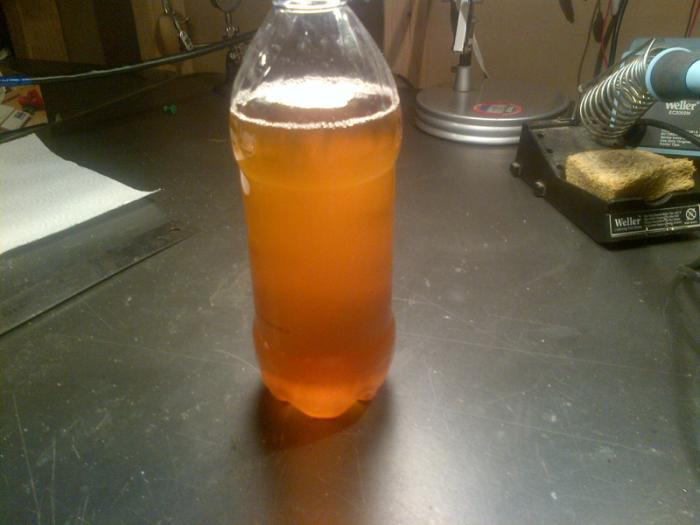Thanks for your reply Sir Humpsalot!
That is a great explanation. I have a lot more reading to do because you have generated some more questions.
I will stick to single fermenting. This time of year I am more worried about keeping it from getting too cold. Still trying to understand what the optimum temperature range is. In the interest of marital bliss, I ferment in the basement which this time of year can get pretty chilly. I currently have a heat lamp over the bottles to try to keep the temp above 60.
You mentioned 2 months aging for a 5% beer. Is that how long I should have left it in the fermenting pail? The kit instructions indicated 4~6 days but when I measure the SG after a week, it still had not reached the 1.008 target so I left it for another week. This fit right into a 2-2-2 schedule I had read elsewhere although I didn't expect to meet the last two weeks. Probably only one week in the fridge.
my 2 months suggestion is a ballpark for when a 5% beer will be at its peak. Normally, when you start brewing, you will consume your beer considerably quicker than that and that results in the common homebrewer lamentation that "the last beer is the best." If you can brew enough and have enough supply, so that you don't have to tap into your 5% beer for 2 months (or your 6% beer for 3 months, or your 7% beer for 4 months, etc), you will find that even most average recipes will far outshine many beers that you can buy in a bottle. It's simply a matter of timing.
It really doesn't matter that much though. Your beer will be drinkable in 2 weeks, will stop giving you bad farts in 4 or 5 weeks, and will be even better at 6 weeks. But at 8-12 weeks, it will really hit its prime.
Some factors that alter the calculation are:
1. Hefeweizens taste better young, typically around 4 weeks. At 2 months, the are starting to be past their prime (but still tasty, of course!)...
2. Beers with lots of flavor and aroma hops will have more of that hoppy goodness when they are younger, so it's a balancing act. Age a 15% hoppy IIPA for a year and it will taste smoother and cleaner, but you will lose a lot of the hops flavor and aroma.
3. In my very limited experience, WLP090, San Diego Super Yeast seems like it cleans up VERY quickly. You can maybe... maybe... cut the aging time in half with that yeast. I haven't done enough experimentation to say for sure, but that's one of the selling points of that yeast, it floccs sooner and gets drinkable faster. I have a 12.8% Stout that's pretty close to drinkable after 1 month using that yeast. I'm sure it'll be better at 3 months though, and probably even longer, but we will see. It tastes promising.





























![Craft A Brew - Safale S-04 Dry Yeast - Fermentis - English Ale Dry Yeast - For English and American Ales and Hard Apple Ciders - Ingredients for Home Brewing - Beer Making Supplies - [1 Pack]](https://m.media-amazon.com/images/I/41fVGNh6JfL._SL500_.jpg)




















